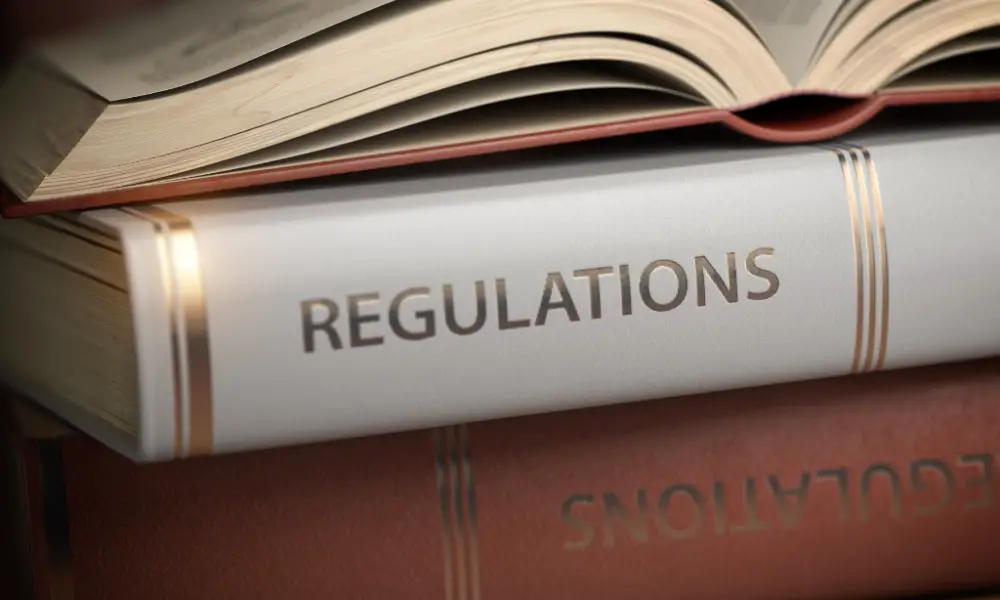Fdcpa Regulation F : What it is
Fdcpa Regulation F: What It Is As an individual navigating the world of debt collection, it's crucial to understand the rules and regulations that protect your rights as a consumer. One such important regulation is Fdcpa Regulation F, which amends the Fair Debt Collection Practices Act (FDCPA) to offer enhanced consumer protection. In this post, we will explore what Fdcpa Regulation F entails and how it affects both consumers and debt collectors. What Is Fdcpa Regulation F? 1. The Basics of Fdcpa Regulation F Fdcpa Regulation F, also known as the Final Rule, is an amendment to the FDCPA issued by the Consumer Financial Protection Bureau (CFPB). Its primary objective is to modernize and clarify the FDCPA's requirements, ensuring that debt collectors operate fairly and provide consumers with transparency. 2. Enhancing Consumer Protection Fdcpa Regulation F introduces several key provisions to strengthen consumer protection. One of the most notable changes is the requirement for debt collectors to provide clearer and more detailed disclosures to consumers regarding their debts. This includes providing information about the amount owed, the entity to whom the debt is owed, and how to dispute or request verification of the debt. Additionally, Regulation F aims to limit the frequency of communication between debt collectors and consumers to prevent harassment. Under the new rule, debt collectors can only contact consumers up to seven times within a seven-day period. Furthermore, after having a conversation with the consumer, the debt collector has to wait at least a week before making another contact attempt. To ensure accuracy and accountability, Regulation F also mandates that debt collectors possess reliable supporting information about the debts they are collecting. If a consumer disputes a debt, the debt collector must verify the accuracy of the debt and provide evidence if requested. 3. The Impact on Debt Collectors While Fdcpa Regulation F tightens the rules for debt collectors, it also acknowledges their challenges and provides clarity on permissible communication methods. Debt collectors are now allowed to use newer communication technologies, such as email and text messages, as long as they comply with applicable consent and disclosure requirements. Moreover, debt collectors are required to maintain better records to ensure they accurately communicate with consumers. They must document all the times they contact consumers and retain these records for a certain period, enabling proper documentation and possible evidence if disputes arise. Frequently Asked Questions (FAQs) Q: Does Fdcpa Regulation F apply to all types of debt collectors? A: Yes, Fdcpa Regulation F applies to debt collectors of all types, including collection agencies, debt buyers, and attorneys who regularly engage in debt collection. Q: How can consumers dispute a debt under Fdcpa Regulation F? A: If a consumer believes a debt is incorrect or has been unjustly pursued, they can dispute the debt with the debt collector. The collector must investigate the dispute and provide the consumer with verification of the debt, including any supporting documentation. Q: How does Fdcpa Regulation F protect against harassment from debt collectors? A: Regulation F places limits on the frequency and timing of debt collector communication to prevent harassment. Debt collectors are prohibited from contacting consumers at inconvenient times or places, such as before 8 a.m. or after 9 p.m., unless the consumer agrees to alternative timing. In conclusion, Fdcpa Regulation F plays a crucial role in safeguarding consumers' rights during debt collection processes. By enhancing transparency, limiting communication frequency, and requiring proper documentation, the regulation ensures fair treatment for consumers while recognizing the challenges faced by debt collectors. Understanding Fdcpa Regulation F empowers consumers to assert their rights and take necessary action when dealing with debt collectors.  Image Source : www.theonelessfoundation.org
Image Source : www.theonelessfoundation.org  Image Source : www.neuanalytics.com
Image Source : www.neuanalytics.com  Image Source : empirecollectionagency.com
Image Source : empirecollectionagency.com  Image Source : cjusjobs.com
Image Source : cjusjobs.com  Image Source : www.pdcflow.com
Image Source : www.pdcflow.com  Image Source : go.solutionsbytext.com
Image Source : go.solutionsbytext.com  Image Source : www.neuanalytics.com
Image Source : www.neuanalytics.com  Image Source : www.tavellico.com
Image Source : www.tavellico.com
CFPB Proposed Rule: Amending Regulation F, FDCPA (Debt Collection
Regulation F Brings The FDCPA Into The 21st Century
 Image Source : www.neuanalytics.com
Image Source : www.neuanalytics.com What Does FDCPA Regulation F Mean For Debt Collection? | Empire
 Image Source : empirecollectionagency.com
Image Source : empirecollectionagency.com What Is Regulatory Law Definition Legislation & Regulatory Law Examples
 Image Source : cjusjobs.com
Image Source : cjusjobs.com regulatory legislation examples investigation fbi forensic
FDCPA Compliance: Answering Your Questions About Regulation F | PDCflow
 Image Source : www.pdcflow.com
Image Source : www.pdcflow.com TCPA And FDCPA/Regulation F Text Messaging With White Paper
 Image Source : go.solutionsbytext.com
Image Source : go.solutionsbytext.com Regulation F Brings The FDCPA Into The 21st Century
 Image Source : www.neuanalytics.com
Image Source : www.neuanalytics.com Regulation F: An Update To The FDCPA
 Image Source : www.tavellico.com
Image Source : www.tavellico.com Fdcpa compliance: answering your questions about regulation f. Cfpb proposed rule: amending regulation f, fdcpa (debt collection. What is regulatory law definition legislation & regulatory law examples. Regulation f brings the fdcpa into the 21st century. Tcpa and fdcpa/regulation f text messaging with white paper